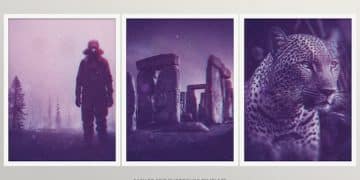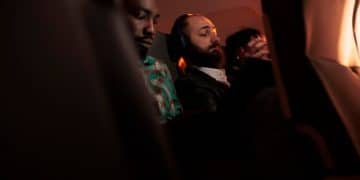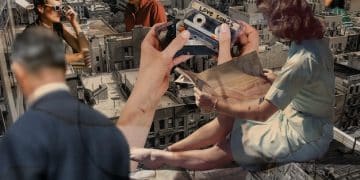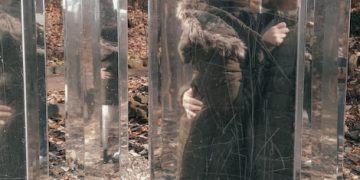The Lost Art of Practical Effects: 3 Movies That Show How It’s Done
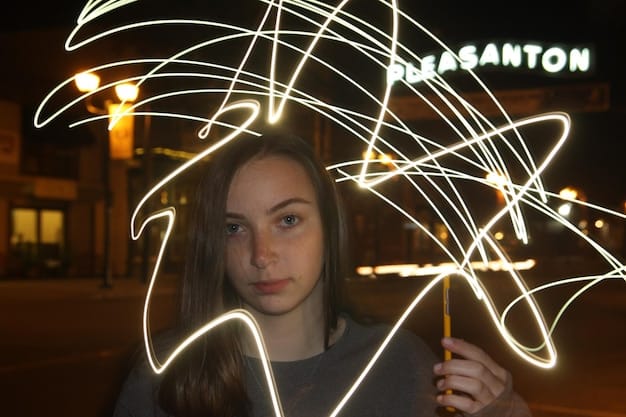
The lost art of practical effects, involving physical props and makeup, continues to offer unique visual experiences in filmmaking; this article celebrates three movies that exemplified masterful practical effects: *The Thing* (1982), *An American Werewolf in London* (1981), and *Jurassic Park* (1993).
Step into the fascinating realm where cinema magic transcends computer screens. We’re revisiting the lost art of practical effects: celebrating 3 movies that mastered visual storytelling, proving that sometimes, the tangibility of film trumps digital wizardry.
Rediscovering the Charm of Practical Effects in Film
In an era dominated by CGI, practical effects can feel like relics of a bygone age. However, many filmmakers and audiences appreciate the unique qualities that practical effects bring to visual storytelling. They provide a sense of realism and tangibility often missing in purely digital creations.
Practical effects involve creating visual elements on set during filming, utilizing physical props, makeup, and animatronics rather than post-production digital alterations. Let’s explore why this “lost art” still holds significance.
Why Practical Effects Still Matter
Despite advancements in CGI, practical effects offer unique benefits. They provide something material for the actors to interact with, and they ensure that the visual texture of the production is more realistic.
Additionally, practical effects often age better than their CGI counterparts. What looks cutting-edge today might seem obsolete in just a few years, but a well-executed practical effect typically holds up because its visuals are naturally grounded in reality.
- Tangible realism for both actors and audience
- A unique, natural feel that CGI often struggles to replicate
- Durability against the test of time, avoiding the “dated” look of early CGI
Ultimately, when done right, practical effects have staying power and add authenticity to a film that digital effects sometimes lack. That’s why it’s important to recognize movies and filmmakers who’ve used them well.
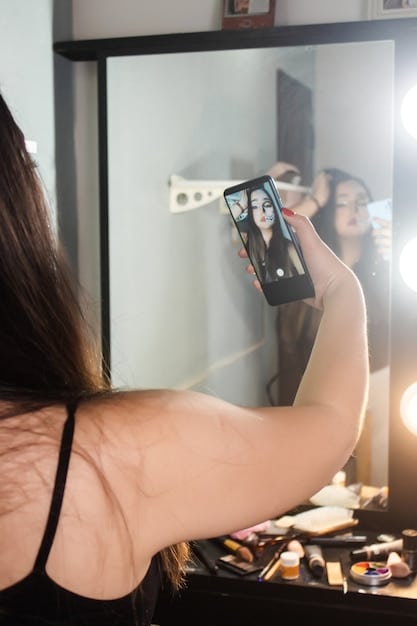
The tangible nature of practical effects enhances the overall cinematic experience, offering audiences scenes that feel grounded and authentic. These methods engage viewers more deeply, creating a more immersive world.
The Thing (1982): A Masterclass in Creature Design
John Carpenter’s *The Thing* stands as a monumental achievement in practical horror. The movie’s terrifying and constantly morphing alien creature was brought to life almost entirely through practical methods, making it a landmark in special effects history.
What made *The Thing*’s effects so effective? It’s that they were real, tangible, and grotesque–pushing the boundaries of what could be physically created for a film. The effects team, led by Rob Bottin, spared no imagination and took the movie to the edge of the possible for the time.
The Creative Genius Behind Rob Bottin
Rob Bottin was instrumental in the movie’s success, innovating new techniques to meet Carpenter’s dark vision. His dedication took a physical toll, landing him in the hospital after an exhausting creative process.
Bottin had to pioneer new methods to bring the ever-changing alien replications to life. His team utilized everything from foam latex and rubber to mechanical effects and puppetry. The outcome was more than special effects; it was an artform unto itself.
- Innovative use of foam latex, and other materials to create horrifying creature designs.
- Extensive use of puppetry and animatronics to add movement and realism to the effects.
- Pushing both the physical and creative limits of special effects.
The enduring appeal of *The Thing* lies not just in its suspenseful narrative but also in the visceral believability of its monster, cementing it as a high mark in practical horror.
Through tangible, carefully crafted effects, the movie delivered a horrifying and unforgettable experience. The legacy of *The Thing* highlights how effective practical effects can be in immersing an audience. The alien is truly brought to cinematic life.
An American Werewolf in London (1981): The Pinnacle of Transformation
John Landis’ *An American Werewolf in London* revolutionized the werewolf transformation scene. It wasn’t just about fur and fangs; it depicted the painstaking and agonizing physical metamorphosis in horrific, yet believable, detail.
The transformation scene is still talked about today and is a result of Rick Baker’s fantastic work. His team pulled off special effects that had the audience squirming in their seats. The way the character literally rips apart human skin to show a growing werewolf underneath remains a high mark in horror.
Rick Baker’s Groundbreaking Work
Rick Baker broke barriers with his transformative effects for *An American Werewolf in London*. The extended werewolf transformation sequence was nothing short of revolutionary.
The movie utilized prosthetics, makeup, and innovative mechanical effects that hadn’t been seen before. The effects didn’t just look real—they felt horribly, viscerally real, leading to Baker receiving the first-ever Academy Award for Best Makeup.
- Revolutionary prosthetics and makeup that redefined werewolf transformations in cinema.
- The visceral quality of the effects set a new standard for on-screen horror.
- A significant milestone that earned Baker the first Academy Award for Best Makeup.
With innovative techniques and creativity, it set a standard for horror that is still inspiring artists today. *An American Werewolf in London* cemented its place in film history because of Baker and the practical effects utilized.
The film made audiences believe in the unbelievable, setting a new standard for special effects in a horror film. Baker’s work remains a crucial point in what can be achieved using practical effects. It showed how effects could deepen a movie’s narrative.
Jurassic Park (1993): Where Animatronics Ruled
Steven Spielberg’s *Jurassic Park* marked a turning point in how dinosaurs were portrayed on the big screen. The film combined animatronics with CGI to create dinosaurs that felt like real creatures rediscovered from pre-history.
Initially, Spielberg had intended to rely primarily on stop-motion animation, it soon became obvious that fully realized animatronic dinosaurs, brought to life by the legendary Stan Winston, could provide the tangible realism needed to truly capture the audience’s imagination.
The Genius of Stan Winston’s Animatronics
Stan Winston’s team developed full-scale animatronic dinosaurs that could move, roar, and even “breathe,” bringing unprecedented realism to the creatures. These creations were combined with state-of-the-art CGI—a revolutionary mix at the time.
The blend of practical and CGI in *Jurassic Park* not only pushed technological boundaries but also enhanced the film’s storytelling and immersive experience. The animatronics provided the film with a crucial organic element that grounded the dinosaurs in reality.
- Full-scale animatronic dinosaurs with realistic movement and reactions.
- A revolutionary blend of animatronics and CGI that set new industry standards.
- Dinosaurs that audiences could genuinely believe in, thanks to the blend of practical and digital effects.
The success of *Jurassic Park* also changed the landscape of special effects and showed how merging techniques could elevate a film from mere entertainment to a cinematic benchmark.
The lasting legacy of *Jurassic Park* is in how it used both practical effects and CGI to create a world that felt real because it literally was real at least in part. Dinosaurs stomped the earth again, not just in our imagination, but on the movie set.
The Enduring Legacy of Practical Effects
Practical effects continue to inspire filmmakers and intrigue audiences. While CGI offers almost limitless possibilities, practical effects give a film a tangible, authentic quality that CGI often struggles to achieve.
The films discussed above showcase the power and creativity of practical effects, proving they are far from obsolete. The art of creating tangible illusions continues to hold a special place in movie lovers’ hearts.
The Resurgence of Practical Effects
With the rise of nostalgia and desire for authenticity, practical effects are witnessing a comeback. Many modern filmmakers are incorporating practical effects into their movies to achieve a unique visual texture and provide a more grounded experience.
There is something deeply satisfying about watching a practical effect at work. It’s seeing the creativity of cinema in its most tangible form.
- A return to practical effects for the immersive and qualitative experiences.
- More creative freedom and tangible qualities absent in many forms of CGI.
- A desire for authenticity in a digital era.
Practical effects offer a tangible realism and a creative ingenuity that continue to make them a valuable tool. While filmmaking has moved from the tangible effects being at the fore font of it, their place in cinema history is sure.
In a world of ever-advancing technology, practical effects not only remain relevant but are being embraced by a new generation of filmmakers who seek a more authentic and engaging visual experience.
| Key Point | Brief Description |
|---|---|
| 🎬 Practical Effects | Using physical props, makeup, and animatronics during filming. |
| 👹 The Thing (1982) | Showcases horrifying practical creature design by Rob Bottin. |
| 🐺 An American Werewolf in London (1981) | Features groundbreaking werewolf transformation by Rick Baker. |
| 🦖 Jurassic Park (1993) | Combines animatronics and CGI for realistic dinosaur portrayals. |
Frequently Asked Questions
▼
Practical effects refer to visual effects achieved on-set during filming using real physical props, makeup, and animatronics, instead of relying on computer-generated imagery (CGI) added in post-production. They focus on tangible realism.
▼
The term “lost art” implies the decreasing use of practical effects due to the rise of CGI. However, many filmmakers still utilize it for its unique qualities. These provide an authentic visual texture often missing in purely digital creations.
▼
*The Thing* is renowned for its incredibly grotesque and realistic alien creature designs almost entirely achieved using practical methods. Special effects guru developed cutting edge practical effects that still hold-up today.
▼
The film introduced a painstaking and excruciatingly detailed werewolf transformation sequence utilizing prosthetics, makeup, and groundbreaking mechanical effects. It redefined on-screen body horror that looks so good it is now a horror staple.
▼
*Jurassic Park* effectively combined full-scale animatronic dinosaurs with then-state-of-the-art CGI. The dinosaurs blended both realism with cutting edge digital advancements making the creatures believable.
Conclusion
Celebrating these films, we are reminded that practical effects are more than just visual tricks. They are tangible elements that enrich the narrative and connect with audiences on a deeper, more visceral level. The legacy of these techniques confirms their place in the history of filmmaking.

